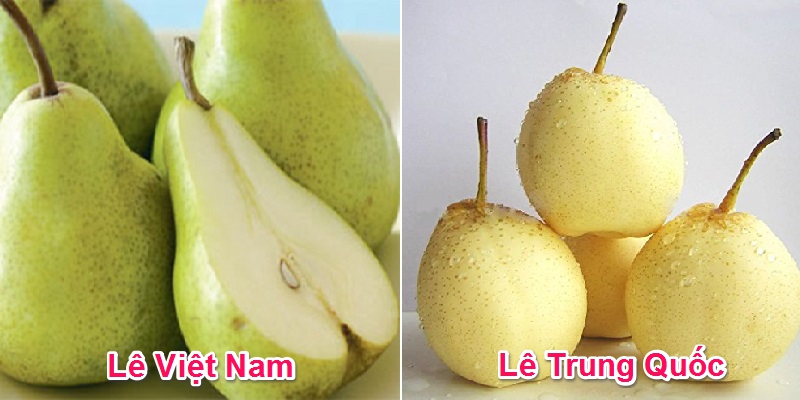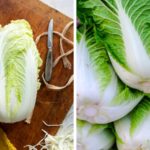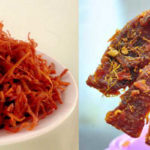Pear, also known as Mac cop, is a popular fruit among consumers during hot summer days due to its sweet, refreshing taste that helps quench the body’s thirst. Additionally, pears are rich in fiber, antioxidants, and beneficial minerals such as potassium, making them a healthy choice for maintaining overall well-being.
There are two main types of pears: those with green skin and those with brown skin, primarily grown in Lang Son and Ha Giang provinces. These pears are harvested around July each year in limited quantities, making them a seasonal fruit in Vietnam. In contrast, pears imported from China are available year-round. While some individuals believe that Chinese pears are not as delicious as Vietnamese pears, they may struggle to differentiate the two varieties.
To distinguish between Chinese pears and Vietnamese pears, the following characteristics can be relied upon:
1 How to Differentiate Chinese Pears and Vietnamese Pears
One can differentiate between the two types of pears based on their shape, size, color, and taste.

Vietnamese Pears
Vietnamese pears possess a slender shape, firm texture, and smaller size compared to Chinese pears. With a rough skin and slightly dark brown color, Vietnamese pears have white flesh that is uniform and crisp, neither dry nor brittle. They offer a sweet, slightly sour taste, mild fragrance, and a slightly sandy texture upon consumption, creating a distinct natural flavor.
Chinese Pears
Chinese pears are larger than their Vietnamese counterparts and exhibit a round, evenly-shaped appearance. They have smooth and shiny outer skin, which is usually bright green or yellow, making them more visually appealing than other pear varieties. However, their flesh often contains small black spots. Chinese pears possess a sweet taste with high water content, resulting in a softer and more tender texture compared to Vietnamese pears.
Moreover, Chinese pears have a longer shelf life, sometimes lasting months without spoiling. If they do spoil, it tends to occur from the inside out, rather than from the skin inward. On the other hand, Vietnamese pears spoil quickly, similar to other typical fruits, if left unattended.
2 Tips for Purchasing Pears
– It is recommended to purchase pears during their respective seasons when they are ripe naturally, ensuring better taste compared to off-season pears.
– Upon arriving home, it is advised to soak the pears in diluted saltwater for approximately 30 minutes before peeling them. Subsequently, rinse them with clean water and use as usual.
– To avoid purchasing low-quality pears, opt for reputable places, stores with recognized brands, or large supermarkets.
Apart from these two types of pears, consumers can also consider purchasing other imported varieties, such as Korean pears, to ensure the healthiness and well-being of their families.
The above information provides helpful tips on distinguishing between Vietnamese pears and Chinese pears. With this knowledge, individuals can make informed choices when it comes to selecting the most suitable pears for consumption.
You might also be interested in:
High Demand for ‘Super Giant’ Chili Pepper Despite Expensive Cost
The talk of the town is a new breed of “giant super chili” pepper that has been making an appearance. It’s powerful heat and hefty price tag is creating an excitement as people line up in anticipation of tasting this fiery vegetable. Want to know more about this mysterious discovery? Read on to find out more!
Recognizing Chemically Dyed Dried Beef: A Guide
Consumers should be aware of the potential dangers of consuming certain types of dried beef, such as those dyed with artificial coloring and treated with chemicals, as it has been associated with numerous cases of food poisoning. Knowing how to differentiate between genuine and fake dried beef can help to avoid such risks.



































